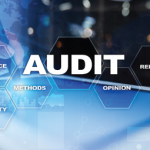One of the key reasons to self-audit a practice’s documentation and billing process is to identify areas in the practice that could potentially put the practice at risk. The Office of Inspector General describes seven elements it relies on as a foundation for provider compliance; the first of the seven is auditing.
All practice staff knows that even when the ICD-9-CM and CPT codes are assigned correctly for an encounter, the claim may be denied, rejected or not properly paid due to a multitude of reasons. The practice performance audit endeavors to evaluate any errors, timeliness of practice processes and inefficiencies within the practice that may result in incorrect, delayed or denial for payment for services.
Key guidelines to follow when performing practice audits:
- Select random charts; this will help with looking at the variety of services performed. It will not profit the practice if only selected visits are reviewed, which can leave the practice vulnerable if certain visits are not reviewed;
- Physicians should not review their own charts, because it’s almost impossible to be unbiased when looking at one’s work. It’s important for the person reviewing the charts to have knowledge of coding rules and guidelines and understand how to complete an audit review worksheet;
- Practices should use the same rules auditors use to review charts. Although many payers may interpret guidelines differently, they usually follow some key rubrics when it comes to auditing physician charts; and
- Auditing results should be educational, because this is a learning opportunity for the entire practice. Physicians should have the chance to review the results and discuss openly.
Clinical Documentation
In addition to reviewing the services documented and ordered vs. what was coded and billed, a practice performance audit should review signature requirements for physicians and other healthcare professionals. Services that can’t be validated based on third-party guidelines should be reviewed and possibly reported and refunded if reimbursement was received for services.
Coding
The most common practice performance audits are for coding the diagnoses and procedures. When conducting a coding audit, the following components should be incorporated as part of the practice performance audit:
- Assigned codes vs. audited codes;
- Assigned codes vs. codes on the explanation of benefits; and
- Assigned codes vs. codes on claim that was sent to carrier.
The key to ensuring all reimbursable services are captured in the medical record is to develop a method to identify any noncaptured services and to make revisions and additions to charge documents and billing systems. This method will help to capture money that otherwise would be lost to the practice.
Analysis & Process Improvement
Performing a documentation improvement initiative or performance audit accomplishes very little unless a serious effort is put forth to correct problems that are identified. Once the information from a practice performance audit is compiled, the data should be recorded and analyzed. By identifying areas of deficiency or those that need improvement, practices can begin the process to:
- Improve documentation if necessary;
- Decrease days in data entry and improve collections;
- Reduce days in accounts receivable;
- Implement mechanisms to identify services that were missed and not captured; and
- Provide education to providers and staff areas that are deficient.
Although these quality and compliance initiatives are burdensome and do nothing for patient quality care, physician practices will still need to avoid any potential risk and liability associated with improper coding and billing. It is a well-known fact the government is intensifying its efforts to crack down on medical fraud and abuse. Monitoring tools should be developed and put in place to track and audit the coding and billing aspects of the practice. Audits should be performed on a regular basis and made a part of the practice’s compliance program. This can be done by starting out small and by selecting areas that are possibly at risk.



